The Kataoka brothers, who came from Tosa to leave their mark on Japan’s financial world
Naoteru Kataoka
(1856~1927)
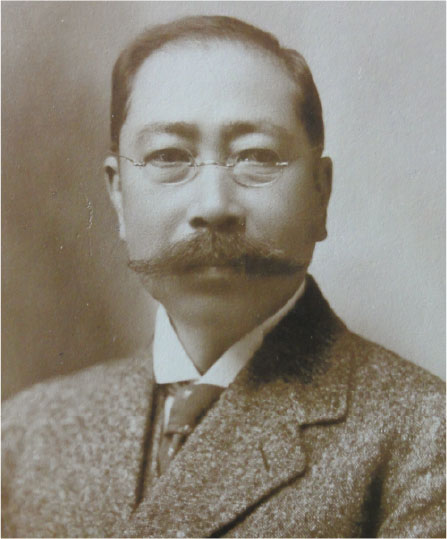
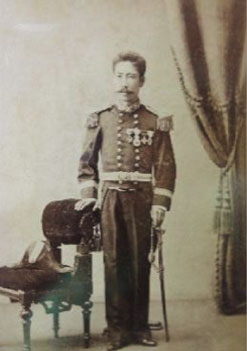
Naval Academy Paymaster Era
(Meiji 19/1886)
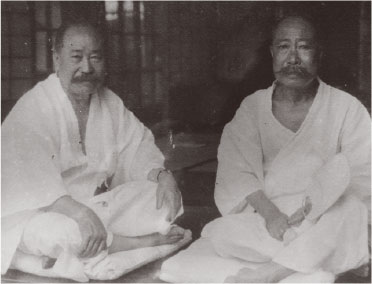
The Kataoka Brothers Later in Life
Naoteru was born as the eldest son of Magogoro and Nobuko Kataoka, country samurai of Hamayama-go Nagano, in the third year of the Ansei era (1856). Because his father Magogoro had invested his money in engaging in loyalist activities, the Kataoka family finances were deeply depleted.
From an early age, he had a quiet and courteous nature, and he studied and learned fencing at a suburban temple elementary school, or terakoya. At around fourteen, he took on students at the temple school and taught lessons in order to supplement the family finances.
At the age of 16, in the 6th year of the Meiji era (1873), he went to Tokyo to continue his studies. He entered the Naval Academy, where he could earn pay as he learned, and began to study logistics and accounting at the just-established paymaster school. The bonds of friendship that he formed with Hayao Shimamura (future Naval admiral), Hideo Takeda (future Naval vice admiral of engineering), and Makoto Saito (future Minister of the Navy and Prime Minister), with whom he studied at the Naval Academy then, would continue throughout his life and be a great assistance to him.
Upon entering the Ministry of the Navy, Naoteru was greatly esteemed for his talent, in particular with languages, and was dispatched to the west as the aide of Minister of the Navy Judo Saigo (younger brother of Takamori Saigo). Afterwards, he was stationed in France for a period of three years. He forged particularly firm ties with Takashi Hara (future Prime Minister), Mitsugu Sengoku (future president of the Kyushu Railway), and Seishu Iwashita (president of the Kitahama Bank), with whom he spent time together in this foreign land.
Upon returning from France in Meiji 24 (1891), Naoteru resigned from the Navy and became secretary to Home Minister Togama Kono, who had been one of his father’s compatriots.
In Meiji 26 (1893), he assumed the role of secretary of Osaka Prefecture and applied himself to improving Osaka Bay and developing water and sewerage services, laying the foundation for Osaka’s expansion. His efforts drew attention and in Meiji 29 (1896) he joined the Bank of Japan. Inexperienced in banking services, he worked in a variety of roles as an apprentice and, the following year, received an exceptional promotion to branch manager of the Osaka Bank of Japan. It was during this period that Naoteru erected the foundation of his substantial influence in Osaka.
In Meiji 34 (1901), Naoteru became the first president of Osaka Gas. The acceptance of foreign investment and coordination with foreign engineers owed much to Naoteru’s wealth of experiences overseas. Afterwards, he took a succession of positions as president or board member of a number of businesses, including the Nankai Railway, Hanshin Railway, Hiroshima Gas, Sakai Gas, and Toyo Wood-Preserving Company, which formed the roots of today’s prosperity.
He defended the Kansai business world from recession by making efforts to save Kitahama Bank, the Obayashi Corporation, and others from business crises, without regard to his own interests, and in doing so he earned the respect of many in financial circles as an upright individual. This is how he came to be known as the “mogul of Nakayamadera” and remained highly influential throughout the rest of his life.
Upon his retirement from finance, he became a member of the House of Lords with Takashi Hara’s firm endorsement; however, in Showa 2 (1927), he passed away at the age of 72.
Success Story: From Young Monk to Cabinet Minister
Naoharu Kataoka
(1859~1934)
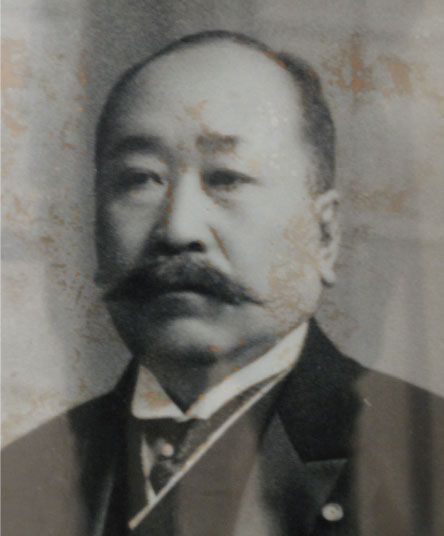
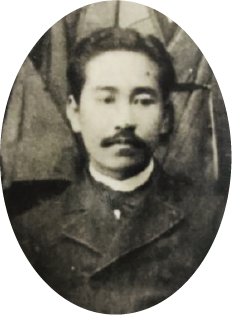
Young Naoharu
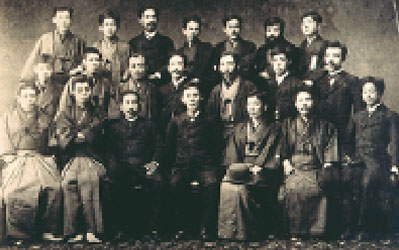
Employee of Nippon Life at the time of its founding (Meiji 24/1891)
Naoharu is third from the left in the front row.
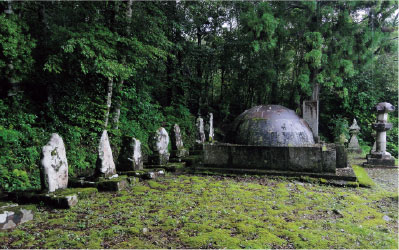
Gravesite of Naoharu Kataoka in Nagano, Tsuno-cho
Naoharu was born as the second son of Magogoro and Nobuko Kataoka, country samurai of Hamayama-go Nagano, in the 6th year of the Ansei period (1859). Compared to his older brother Naoteru, he is said to have had the exact opposite temperament: a competitive and mischievous boy. He lost his father at the age of 9 and, due to the family’s poverty, he was taken in by the Torin Temple in Kure and spent four years as a young monk.
At the age of twelve, he returned to his hometown, continued his studies at the temple school, and worked to support the family finances. He purchased secondhand clothing from Sagawa and sold it onward. At the age of fourteen, he studied at the Chidokan of Kochi’s clan school; at seventeen, he was permitted to enter Kochi’s Education School (later to become a normal school) at public expense. He earned outstanding marks in English and mathematics and, though still an enrolled student, he was appointed to teach at Hanayama-go Himenono Elementary School (present-day Hayama Elementary School).
In Meiji 13 (1880), at the age of just 22, he served as chairman of the Hanayama-go Association of Thirteen Villages. The following year, he went to the capital together with Kiyoma Taniwaki as representatives of an alliance of prefectural supporters. To appeal on behalf of the Kochi prefectural government, he met with Hirobumi Ito, who was then serving as a vice-minister. He laid out his position during the course of a four-hour meeting. Mr. Ito commented of his qualities during that time, “Though young, he is very knowledgeable. He ascertained the positions of other parties well and argued skillfully. I quite admired his levelheaded thinking.” Naoharu, in whom Mr. Ito had detected such talent, was appointed as an official on business of the Home Ministry and entered the civil service.
Upon his assumption of the office of prefectural governor of Shiga Prefecture in Meiji 17 (1884), Hiroshi Nakai, with whom Naoharu was familiar in both a personal and official capacity, appointed Naoharu as an official of the top rank to the prefectural office of Shiga Prefecture. He was simultaneously the chief of seven different sections, but he particularly contributed to the improvement and development of public health. He was promoted to Chief of the Shiga Prefectural Police in Meiji 19 (1886), but, in preparation for his future political career, resolved to leave the civil service in Meiji 22 (1889).
Having left the bureaucracy, Naoharu involved himself in the management of Nippon Life. Approached by Sukesaburo Hirose to manage the newly-established Nippon Life, Naoharu made himself vice president and invited Zen’emon Konoike to assume the role of president. For the next ten years, he steered the management of the company, expanding it into Japan’s largest life insurance company, and subsequently took over from Konoike as president.
Afterwards, he went on to found the Nippon Logistics Company, the Kyoto Miyako Hotel, and the Nara Hotel; he served as president of a succession of businesses such as the Sangu Railway and the Kansai Railway; and became a mainstay of the Kansai financial world on par with his brother Naoteru. To protect the financial community from problems such as the recession following the First Sino-Japanese War and the collapse of the One Hundred Thirty Bank, Naoharu interceded with the government and financial circles and made efforts to ease these crises, leaving a legacy of great service to the business community.
In Taisho 8 (1919), in keeping a desire he had held since his youth to devote his full attentions to politics, he took leave of his positions in business. He was appointed Minister of Commerce and Industry to the Kato Cabinet in Taisho 14 (1925) and subsequently became Minister of Finance in the Wakatsuki Cabinet.
Facing down the Showa financial crisis and needing to deal with the laws related to disaster drafts stemming from the Great Kanto Earthquake of 1923, Naoharu’s remarks provoked political strife and, assuming responsibility, Naoharu resigned. Afterwards, he served as advisor to the Constitutional Democratic Party and as a member of the House of Lords but then passed away at the age of 76.
